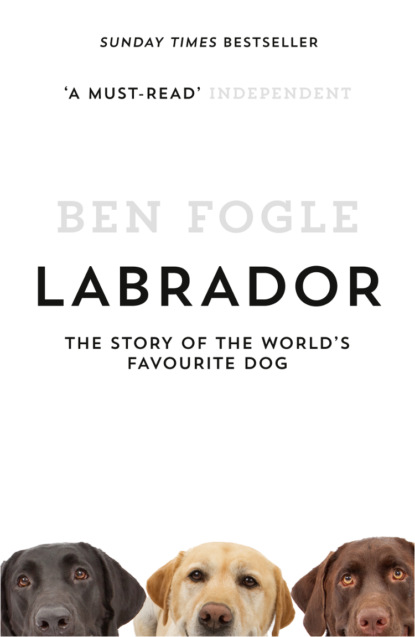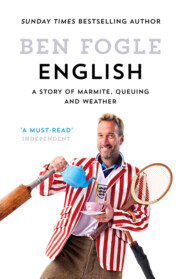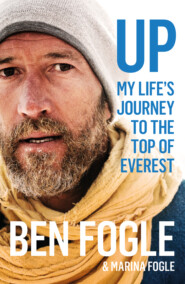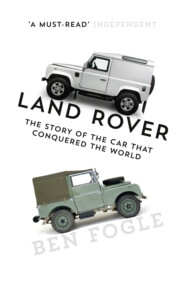По всем вопросам обращайтесь на: info@litportal.ru
(©) 2003-2024.
✖
Labrador: The Story of the World’s Favourite Dog
Настройки чтения
Размер шрифта
Высота строк
Поля
As a young boy, I used to visit Crufts with my father, when it was still held in central London, at Earls Court, and it helped define my childhood. I loved going to Crufts – the noise, the smell, the dogs. My role in the show became tighter in 2006, though, when I was asked to present the BBC’s live coverage of the show. I presented Crufts for two years. I can’t say those years were as happy as my childhood recollections; the pressure of presenting a live prime-time TV show, and the interaction with a significantly haughty group of breeders who didn’t like my style of presenting, inevitably led to a bumpy ride.
I co-presented the show with Inca, my black Lab, at my side. The show was dropped several years later, after the BBC ran a panorama exposé that revealed the slightly murky world of the Kennel Club and their breed requirements that often lead to long-term health complications for many breeds. In fact, Inca was a case in point. Her epilepsy was more than likely to have been caused by a limited gene pool. In short – incest.
I digress.
Back at the late turn of the last century, dog ownership was booming, and with it an appetite for specialised breeds that ordinary people could ‘discover’ as the dog that best suited them. Labradors had come to Britain as sea dogs. They were spotted and cultivated as wildfowling water dogs. As gundogs to the gentry, they acquired a fashionable social status attractive to the aspirational classes. Eager to please and eminently trainable, loyal and lovable, playful and energetic, the Labrador gradually became a great all-rounder, a symbol of social status, a valued working dog to some and a treasured family pet to millions. Once the development of breech loading revolutionised the shooting scene, the breed’s gundog expertise was its passport to the millions.
I left Poole and headed to meet Lord Malmesbury’s son on their old estate. The Malmesbury Estate itself was broken up and sold several decades ago, with the great house turned into apartments and flats. Driving through the gates and along the drive, however, you still get a sense of the estate it once was.
The River Stour meanders through the land, through fields that were once flooded from the heavy rain which had made the river burst its banks. The Stour had memories for me from my school days, just a short way upriver from where I was now.
My first port of call was the small keeper’s cottage. Over tea and scones, the keeper explained to me how important Labradors still are for the shoots. We piled into a battered pickup and drove through the old estate to the remains of the kennels. They had long since fallen into disrepair, with just a couple of walls remaining, largely overgrown. Looking at what remained of them, it seemed incredible that the dogs that had once been kept in these kennels were more than likely to have been the progeny for the millions and millions of Labradors across the world.
It was about the same time that the Earl of Malmesbury was beginning his breeding programme in his kennel on the south coast of England that the fifth Duke of Buccleuch (1806–1884) and his brother, Lord John Scott, imported dogs for use as gundogs on the Queensberry estates, in the Scottish borders, from a Newfoundland fishing fleet which sailed into the River Clyde. They had also realised what an extraordinary dog the Labrador was and so established a kennel in around 1835. One of the Duke’s dogs, Brandy, earned his name on his journey across the Atlantic. Having been sent overboard in a heavy sea to fetch the cap of one of the crew, the young dog spent two hours in the water before he could be picked up again, by which point he was so exhausted that the sailors had to revive him with brandy.
The brothers loved their dogs so much that when they went on a yachting holiday to Naples in 1839, they took their favourite Labradors – Moss and Drake – with them: something that was unheard of back then.
According to records,in 1871, the Earl of Malmesbury’s neighbour, Major Radclyffe – who had patrolled Poole Harbour with the Earl admiring the fishermen’s sea dogs – imported a dog direct from Newfoundland. He was called Turk and would go on to sire the line that included Ben of Hyde, the first yellow Lab to be registered.
By the early 1880s the original Buccleuch strain had died out, just five or six decades on from the original purchases from the fishermen on the Clyde. This could well have signalled the end of the Scottish lineage of the Labrador Retriever, were it not for our friend the sixth Earl of Malmesbury who ‘gave them a pair, descended from our own imported dogs’.
It is probably fair to say that a chance meeting between the third Earl of Malmesbury (at the age of 75) with the sixth Duke of Buccleuch (1831–1914) and the twelfth Duke of Home (1834–1918) saved the Labrador from extinction. The two Scots were visiting a sick aunt on the south coast of England and while there accepted an invitation to participate in a waterfowl shoot at Hurn. Precisely where I was heading now.
The Hurn Estate is another old estate that was broken up long ago, but what remains is managed by the current Earl’s son, James Fitzharris. In an old pickup truck we drove through what was left of the estate that had once been the family seat to James’s ancestors. Hurn Court is now apartments, and there was an air of sadness as we drove along the road that had once been the drive to the grand house.
It was hard to imagine what this place must have been like when it was still the thriving seat of the Malmesburys, in the family’s heyday, when aristocracy had money and power.
‘That’s all that remains of the kennels,’ pointed James from one of the misted windows of the pickup. There were some simple foundations and the skeletal remains of one of the walls. The remains had been largely consumed by the encroaching Dorset countryside.
It struck me that these sad, unloved, anonymous ruins were symbolic of our amnesia as to the provenance of the world’s most popular breed. James explained that he still kept Labradors, but that his father, the current Earl of Malmesbury, ‘couldn’t stand them’.
It was lucky that the current Earl wasn’t seated back in 1887 when the two Scottish visitors were impressed by Malmesbury’s eager-to-please, efficient water dogs and recognised they were the same Little Newfoundler dogs as their father’s. Malmesbury generously offered them some of his dogs to carry on the breeding programme north of the border, and the pair of dogs, Avon and Ned, that he entrusted them with are now considered to be the ancestors of all modern Labradors: the legendary progenitors.
And so it was that the Earls of Malmesbury and the Dukes of Buccleuch were instrumental in developing and establishing the modern Labrador breed.
In a letter written to the Duke, dated 1887, the Earl first used the name ‘Labrador’ in print. ‘We always call mine Labrador dogs and I have kept the breed as pure as I could from the first I had,’ he wrote. ‘The real breed may be known by their having a close coat which turns water off like oil, and, about all, a tail like an otter.’
Inca had the fattest tail you have ever seen; it was more like an otter’s tail – thick with coarse hair. It had never occurred to me that this was part of her heritage – the powerful motor and rudder to propel her through the water.
As I said, Inca loved water.
(#ulink_0c8bc895-89dd-5d33-ac51-286ae7315327)
In 1999, I had been languishing in the offices of Tatler magazine in London and I was now looking for an escape. A way out. I wanted adventure. I was 24 and still living at home. I wanted an opportunity.
At that time the BBC were looking for people to be marooned on a deserted island in the Outer Hebrides for a year, beginning in January 2000. The project, Castaway, would later become one of the first reality shows to be broadcast in Britain. I applied and was chosen as one of 36 people to be shipwrecked on the Isle of Taransay for a year as part of a social experiment to see if we could create a fully self-sufficient community.
We reared our own livestock and grew our own crops. We built a slaughterhouse, a school and our living accommodation.
Each of us castaways had been asked to choose a luxury item that we could take with us. One couple had chosen a bed, another asked for a piano. Someone even opted for a home-brewing kit.
A dog. That was what I’d take. My own dog. A puppy.
Until that moment in my life I had led a relatively selfish existence. The previous 24 years had largely been about me. I had never had to think about anyone else but myself; the family pets were still the responsibility of my parents and I had never had to do an early morning walk with a hangover, or worry about a late night because the dogs were hungry.
This would be the moment that I made the sacrifice and took on a canine responsibility of my own.
But what breed?
I had grown up with Golden Retrievers; I liked Deer Hounds but they were too big; I liked Newfoundlands but they were too hairy; I liked Pugs but they had too many health problems. To be honest, I would have been happy with most breeds, but in reality there was only ever one breed of dog I ever really truly wanted: a Labrador.
Why a Labrador? Well, that is a complicated one, and it will take more than a chapter to explain.
Growing up above a veterinary clinic, I had more than my fair share of encounters with a wide variety of breeds. To be honest, growing up, I loved all dogs – irrelevant of breed, but I knew three Labradors in my childhood, two of which belonged to my late friend Alice Benkert. Alice lived in Esher, and the two dogs, Poppy and Oscar, would come with her parents to collect her from school. I would spend hours with them. I remember the time we came back to her home and the dogs had found several boxes of freezer bags that they had scattered like confetti around the kitchen.
The other Labrador belonged to an English teacher at my school, called PJ. He had a beautiful black dog and a Land Rover – and I coveted both. Now I think about it, I wonder whether getting to know Labradors at the same time that I went to boarding school and was separated from my childhood Golden Retrievers was the seed of my obsession. I cried for a year when I left home. My homesickness was debilitating. It wasn’t just that I missed my home, but also the dogs, Liberty and Lexington.
Lib and Lex, as we knew them, were my best friends and my confidants. They were what really made our house a home. They soothed and settled me. I decorated the walls around my bed at school with photographs of the dogs, but that only made things worse. I would sob into my pillow each night, wishing, longing for that warm, hairy body stretched out on my bed.
When my parents finally understood how much I missed the dogs, they decided it would be a good idea if they came along with us when it was time to drop me off at school. But the fleeting appearance of Lib and Lex only made matters worse – tears would stream down my cheeks as I watched my parents drive away, a small tuft of blond fur visible through the back window.
I’m getting homesick just thinking about it!
Lib and Lex were the first constants I really knew in my life. Both my parents would come and go, depending on work commitments, but the dogs were always there – tail wagging at the door, tongue lickingly happy to see me.
Throughout the term I would find their blond hairs stuck to my clothes. A reminder of my two friends waiting for me at home. Boarding school was the only time in my life when I was forcibly separated from dogs and it was then that I promised myself I would get my own dog at the first opportunity. Young naivety assured me this would be on the day that I left school, but then travel and girls got in the way and my plans got put on a back burner.
Until now. This was the perfect opportunity. The problem was that neither the production company nor the BBC wanted me to take a dog. To be honest, I never really understood why. I think it might have had something to do with the landowner who was leasing the island. While there weren’t many ground-nesting birds on the island of Taransay, there was plenty of livestock.
The makers of the show argued that there were already three dogs, all Collies, coming along, and that a fourth dog would tip the balance. Not only would it be a drain on our limited resources, but it would also affect the fragile human-to-dog ratio.
I set about on a campaign to change their mind. I found as many cute pictures of Labrador puppies as I could and then got my father to draft a letter outlining the human benefits of having a puppy within the community.
We argued that a puppy would be a cohesive addition, helping to bond strangers and bringing peace and harmony to the newly created community. Bringing 36 men, women and children together in the extreme circumstances of a windswept, uninhabited Scottish island was bound to create tensions but, we argued, the presence of a young puppy could help to diffuse any emerging conflict and arguments. Maybe that’s why they didn’t want the puppy …
I promised that I would train the puppy to be a working dog so that she would be an asset to the community. I was sure she could be trained to work with the sheep. And as for a drain on resources, I argued that she could quite reasonably live off scraps. She would be a Labrador, after all. They eat anything, I reasoned.
I’m not sure what clinched the deal for me, but the programme makers eventually relented and I set about finding my perfect puppy. A Labrador, of course.
Dad offered to help. For more than a week, we toured the country looking at litter after litter.
We drove as far north as the Scottish borders to look at puppies. Too thin, too fat – none was quite right. Eventually, detective work led us to a tiny kennel near Heathrow airport. There we saw a litter of black Labradors that stuck in my mind, in particular one of the puppies who was the last to be picked, probably because she was a rather scrawny-looking thing with a large swollen eye.
‘Wasp sting,’ the woman explained.
I examined her carefully.
‘No thanks,’ I said, rather heartlessly, handing her back.








